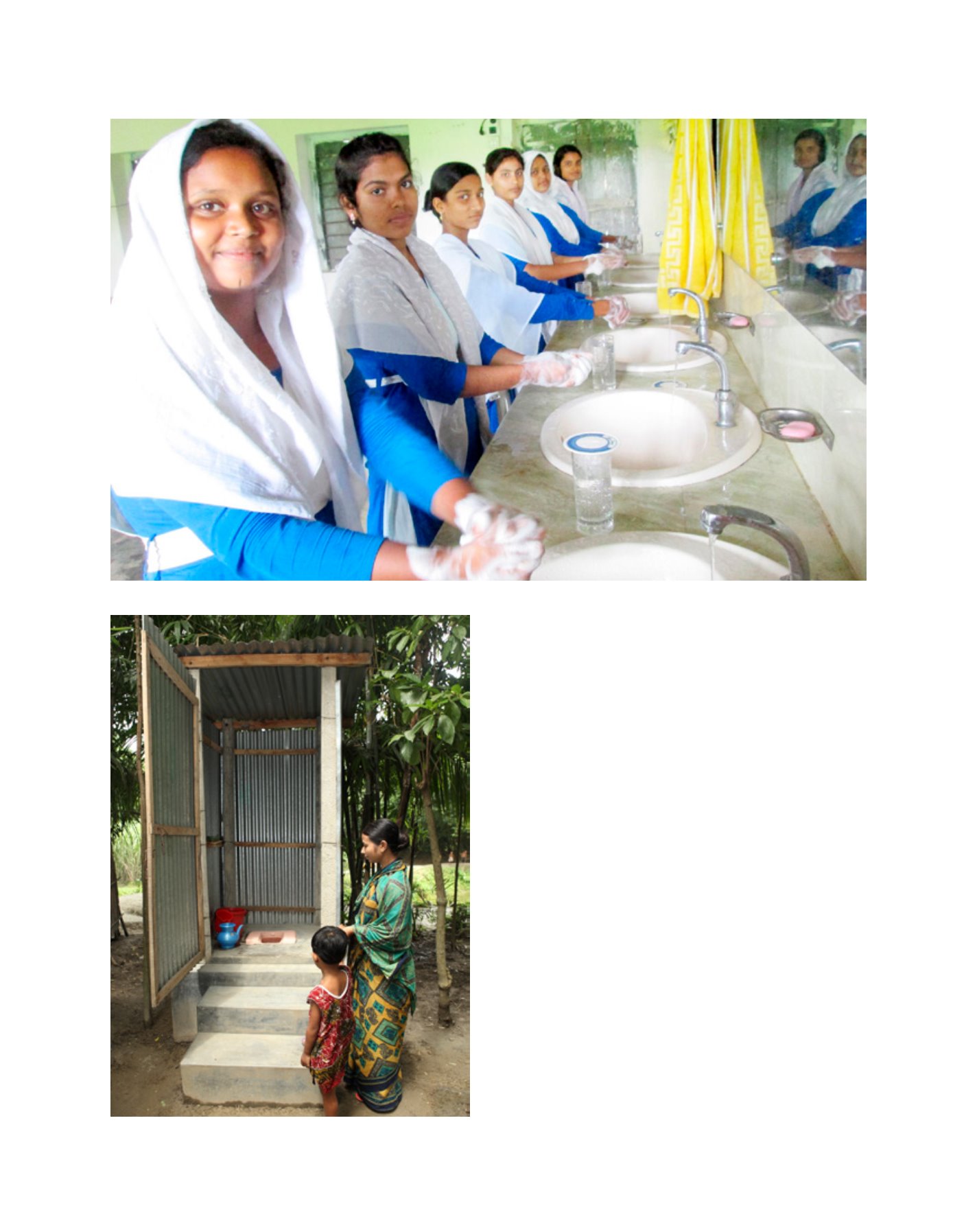

[
] 52
access
to
water
and
sanitation
for
all
At a time when the Millennium Development Goals were
concerned with halving the proportion of people without
access to safe water and basic sanitation, and the wider WASH
sector mainly prioritising the end to open defecation, BRAC
was thinking not just in terms of sustainable service provi-
sion, but also taking gender and socio-economic equity, power
dynamics, and community participation into consideration.
BRAC also made the bold move of investing heavily in hygiene,
at a time when that was not a global priority.
Now, during the era of the Sustainable Development Goals
(SDGs), all of the above are explicitly stated in the indicators
of Goal 6. This provides BRAC with a strong platform to
further improve and adapt its approaches to help contribute
towards achieving universal access.
In terms of monitoring for SGD 6, the WHO/UNICEF Joint
Monitoring Programme is now using service ladders and
benchmarks. From its inception, monitoring was consid-
ered one of the fundamental elements of the BRAC WASH
programme and, as such, played a crucial role in the continu-
ous improvement of the programme. New additions and
adaptations were made following the monitoring results.
During the early years, inputs and outputs were measured
thorough a Management Information System (MIS). Then an
independent quality control unit was established within the
programme to ensure accountability and transparency at field
level. Beside these, BRAC’s monitoring department indepen-
dently monitored the programme and BRAC’s research and
evaluation division carried out independent studies including
baseline, midline and endline surveys. But there was a need for
measuring the quality of services provided by the programme
Hand washing station in school
Image: BRAC WASH
Image: BRAC WASH
The use of latrines has become routine under the WASH programme
















